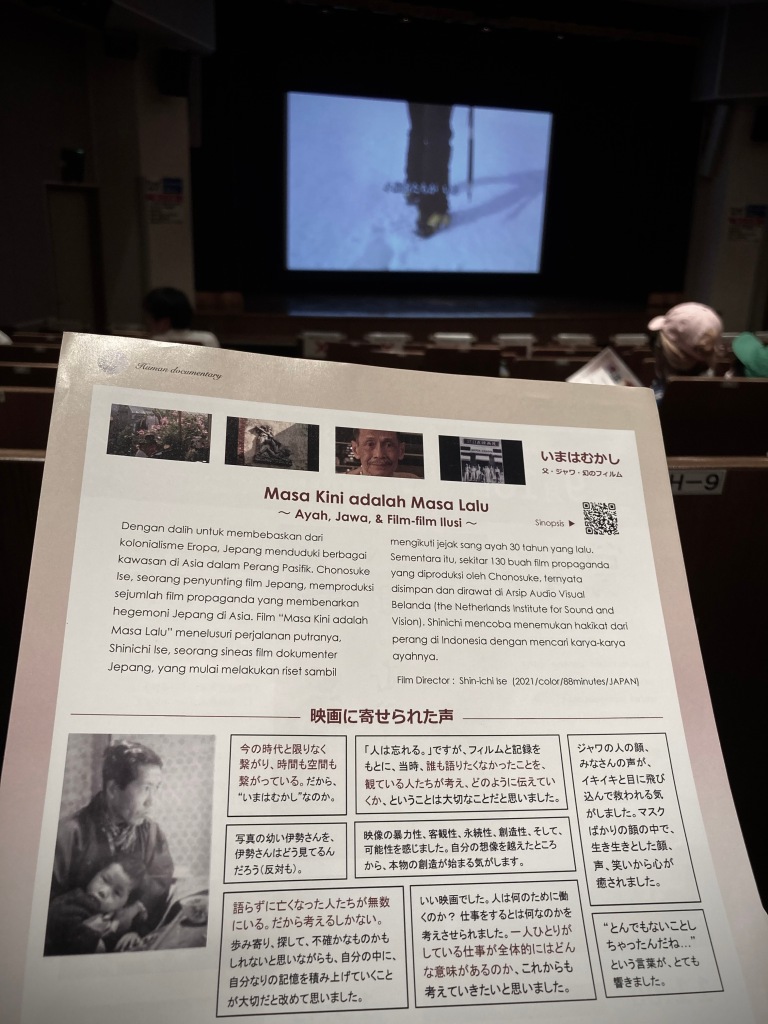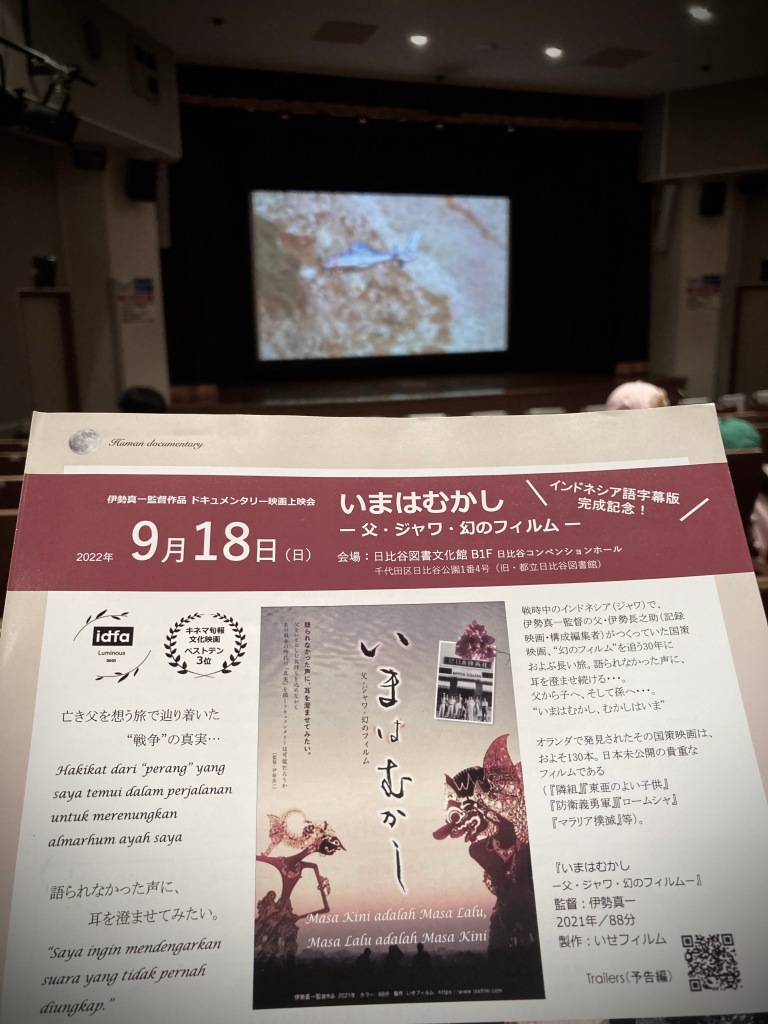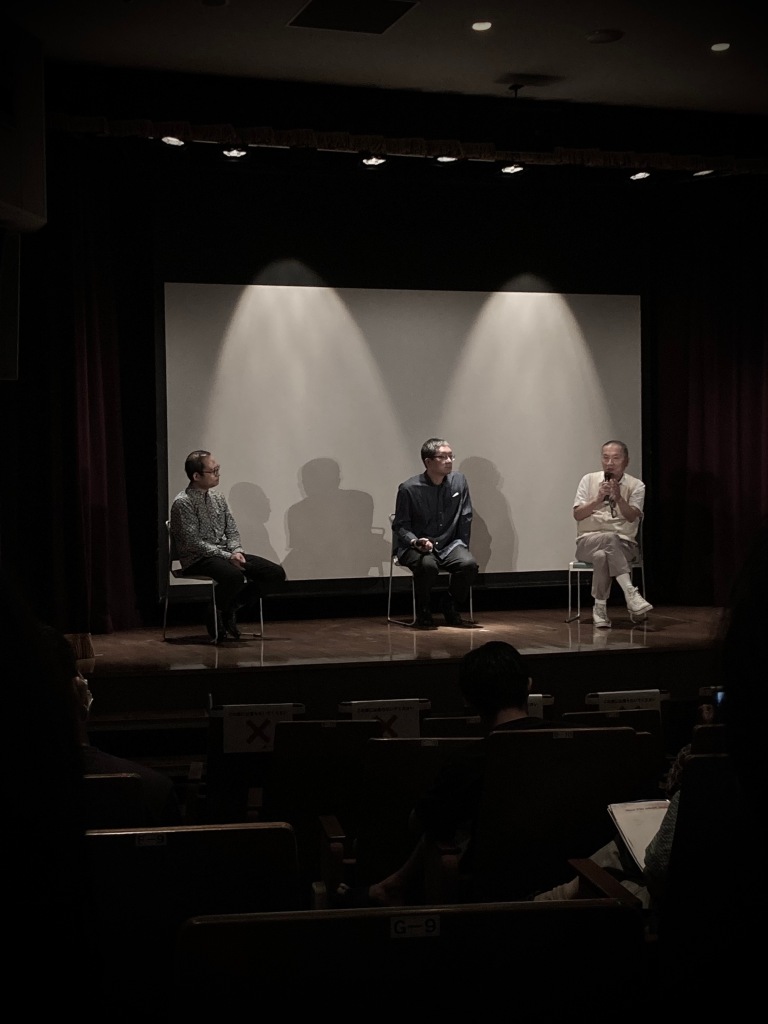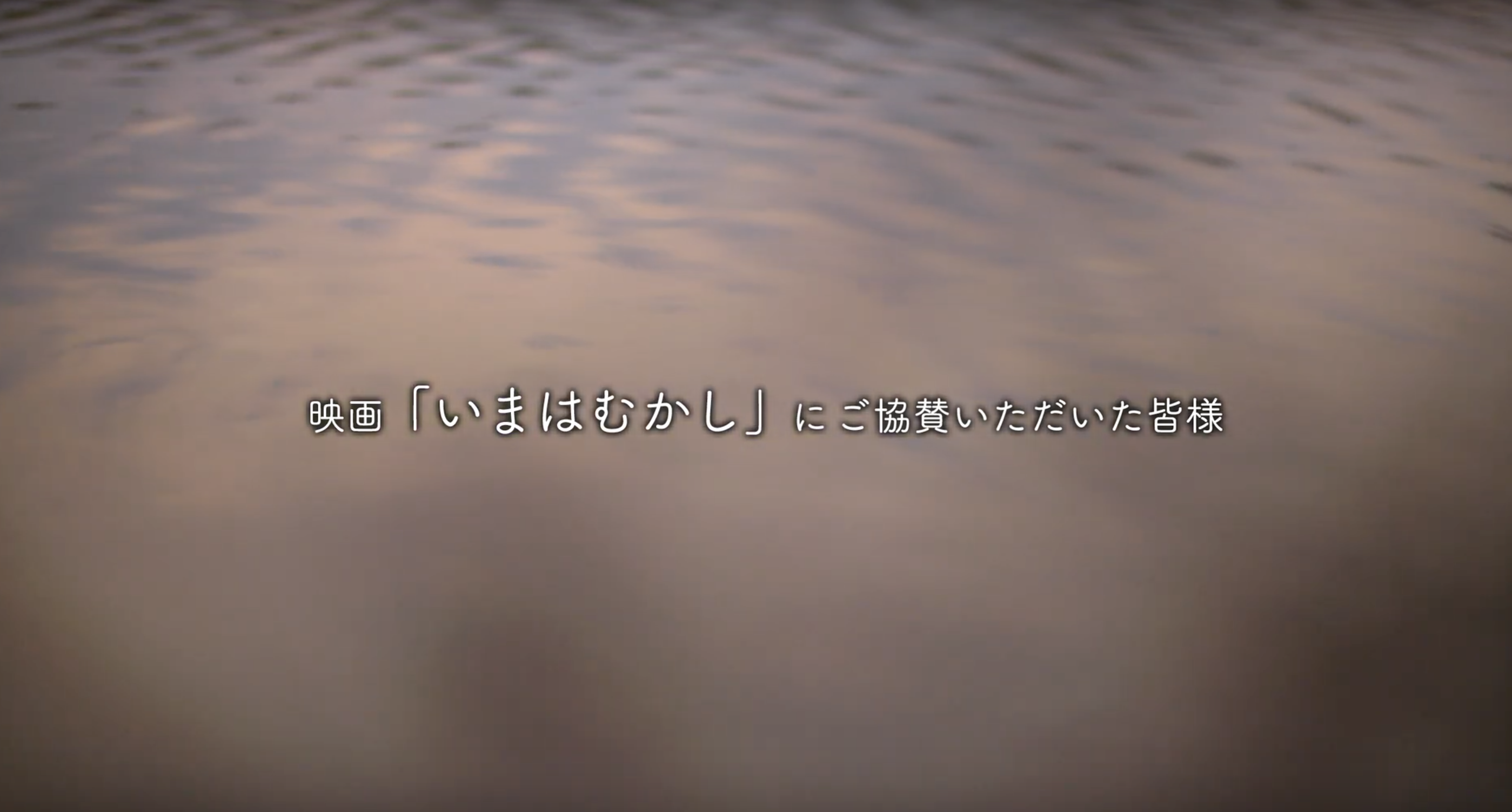Saya Ingin mendengarkan suara yang tidak pernah diungkap.
話られなかった声に、耳を済ませてみたい。
(いまはむかし、父、ジャワ、幻のフィルム)
ー伊勢真
photo credit : ISE Film
On 2014 I manage to join 3rd UNESCO International Youth Forum in Seoul 2014 that brings theme
‘The Role of Youth For Shared Understanding of History in East Asia.’
Our team made a project called “Sharing Without Borders”. We wish that asian countries (especially East Asia) could share variety of history books with wider point of view and avoid bias in the literature. Our team discussed a lot about how this project could give more awareness for youth about the past event, history and enhance the willingness for individual to have more curiosity about wider perspective of the history. I mention the above event because on Sunday September 18th 2022, I went to a movie talk which reminds me of this project.
The movie called いまはむかし 父・ジャワ・幻のフィルム
in bahasa : Masa Kini adalah Masa Lalu (Ayah,Jawa & Film Ilusi)





This documentary movie directed by Shinichi Ise took a very long process and finally finish in 30 years!I can say that its an amazing documentary movie because it captured the feeling of Indonesian’s thought about the WWII. What was captured there and the interview from the documentary has the similar feeling of my neighbor`s thought about Japan and WWII period. There is a paradox feeling such as strong spirit, exciting, sadness, fear, anger, and after all its a mix feeling of a dark era.
I am also surprised to see many rare old advertisement video and old footage during 1940-1944 from this documentary. I have never seen those before and honestly there are mix feeling when I saw this. I feel that war is really cruel, against humanity and at the same time I feel weird because this kind of movie will definitely make some Japanese people shock afterwards. As I read from some articles, there are some history school books in Japan has been distorted and then there it comes the time to watch the unseen footage during the World War II in Indonesia. I wonder how do the Japanese audience feel during watching this movie.
The positive side, I`m impressed with the malaria advertisement video which is so fun, educative and super funny also artistic BW video but at the end of this advertisement there is funny illustration with strong propaganda. I think this type of video is good for malaria knowledge back then in Indonesia, it is good in aesthetic, easy to understand so people back then pay attention to keep their environment clean and avoid malaria disease except the message at the end of the video. Then when I saw some footage about “Good Children of East Asia,” “Tonari Gumi” and other works were intended to introduce Japanese language and customs to Indonesian people, while the “Romusha” series was aimed at mobilizing laborers to work on civil engineering projects. It makes me think that war itself is really the darkest scene of life and human history.
During the Q&A session there are many discussion from the director and teams. It was said by Kayo Ise that the aim to this documentary movie is to show to all audience about the unspoken truth of Indonesia and Japan during WWII. He said also that during that WWII, Japan was both victims and perpetrators but the information that spread around Japan is imbalance. So he thinks that this documentary would be one good archive to give more balance to the above issue.
There is one question from the audience which is a young Japanese influencer, he also speaks a bit bahasa. He has interesting question regarding the message of the movie, he asked to the directors about what does he think about the important to learn history.
If I may joined a discussion related to this question, I may say that of course we need to learn history to get an idea what was our ancestor did in the past and then like what it is said from the movie title いまはむかし、Masa Kini adalah Masa Lalu. There is always a linked, a connection between past and future. And again by screening this documentary film,we can also learn from a hidden dark era of WW II. In my opinion, utilize historical memory for politic will be an obstacle to objective understanding. There might be misunderstanding between East Asia countries if young generation doesn’t know the past history of their country or their neighborhood. I think by knowing the bad past memory, people can realize about real history facts, teach us how to deal with the past problems, how to avoid the second mistake, forgiving the cruel memory and learn about resolution for historical dispute.
I also have 1 question to the movie director during this screening. In my research life, my study focus on wooden architecture of Niassan who is part of Indonesia and Austronesian. I read a lot that Austronesian people tend to use oral tradition such as folk stories, dance, performance, Wayang Kulit as the tools to heir the heritage instead of using literature culture. And when I saw the old footage from the Nippon Eigasha that was mentioned on the documentary (it is the place where Shinichi Ise`s father work), I feel that the propaganda movie are really easy to understand and I wonder if at those time did the Japanese learn about Indonesian`s behavior to create the movie?
I asked if Shinichi Ise has ever heard or found notes from the father about this.
He answered first about the way he made his documentary is pure from his 30 years journey visit Java island, and Dutch (Den Haag) a place where his father movies are preserved and he said he makes the documentary by go with the flow. He had no idea about how his father did the movie or advertisement movie back then. What the director know only the father was sent by Japanese government to make a propaganda movie in Indonesia. He only read from his father`s note during live as film maker in Nippon Eigasha , he rewatch the old BW video to find the clue of informants and then try find where is the location of that BW scene in Indonesia.
I enjoy watching movie since I was in elementary school. I also like documentary movie to watch the footage of history and from there I could observe how did desa-desa (villages) and kota-kota( cities) looks like in Indonesia during the WWII era. This collective footage helps me to understand about the transformation after the colonization and war era. What was changing and I am always curious about it. My background is architecture and I`m interested to know about how was Nusantara in the past and I am always curious about the transformation the local environment, space and traditional housing typology which can be seen from the collection of documentary movies.
Thank you for reading and comments are welcomed!
warm,
Fani Atmanti


